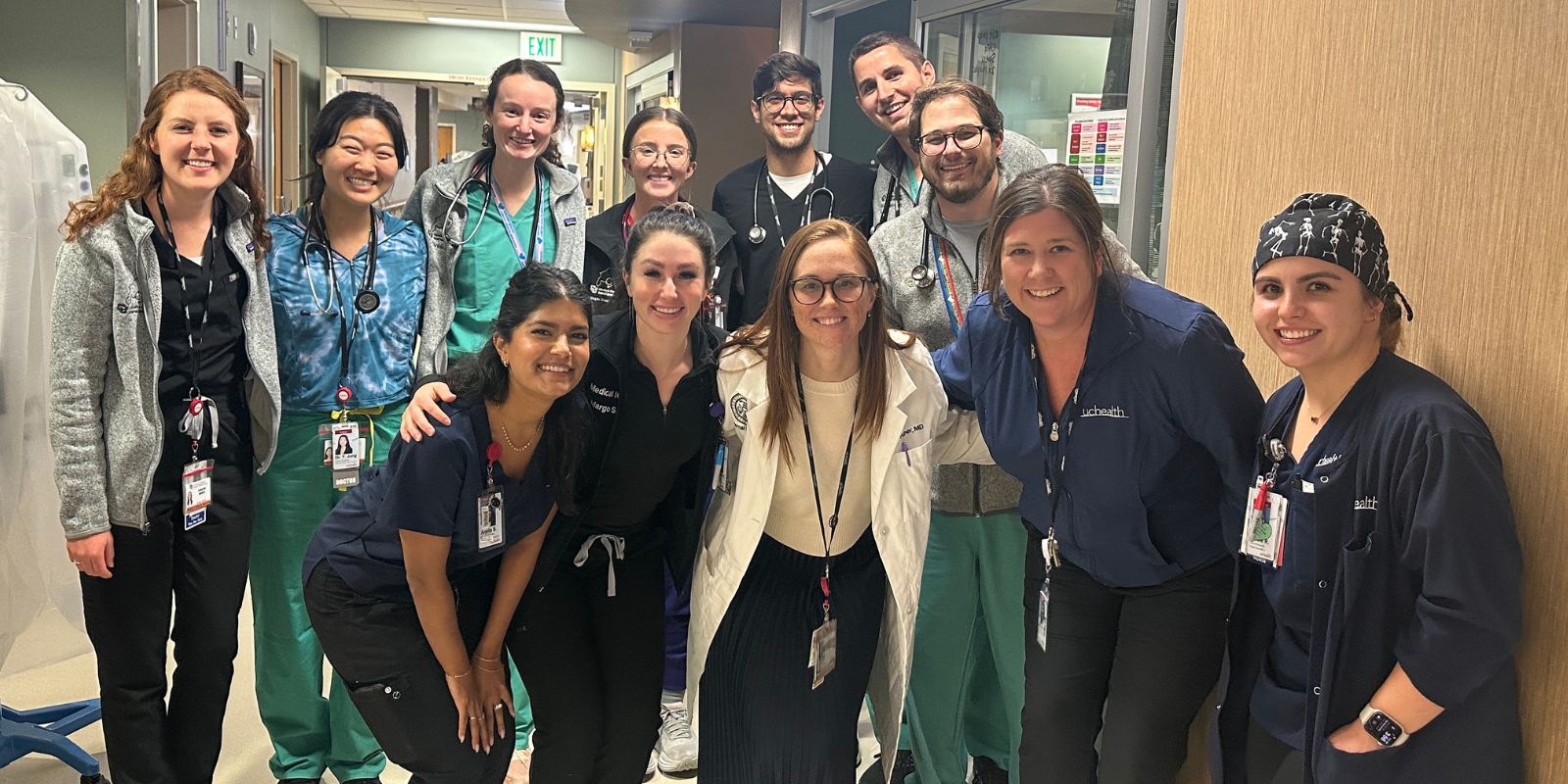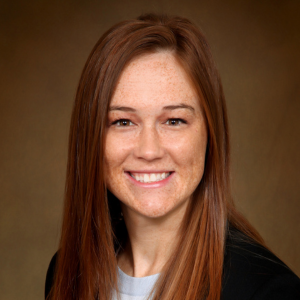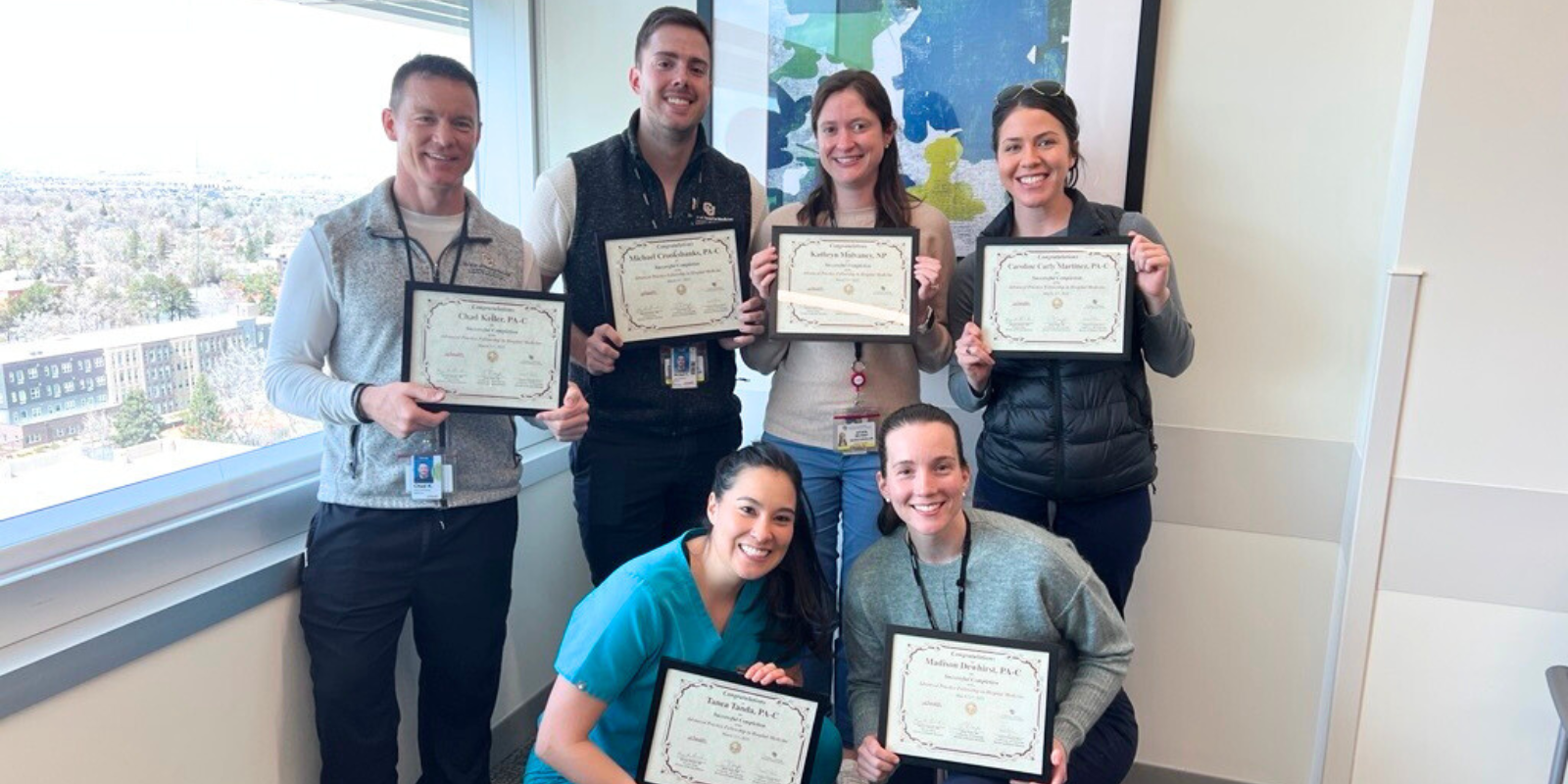Medical residency is a time for a new doctor to train – and, in the case of Alexandra (Ally) Fuher, MD, it’s also a time to teach.
Fuher – a chief medical resident in the University of Colorado Department of Medicine’s Internal Medicine Residency Training Program – has shared her insights on how to protect patients from harm in the hospital in the form of an essay, “The Harm of Inappropriate Central Line Blood Cultures in Clinical Practice.” With Fuher as lead author, the essay was published Oct. 21 as a “Teachable Moment,” part of a series in JAMA Internal Medicine intended to educate medical trainees about the potential harms that can result from certain medical practices.
Fuher – who is a chief medical resident in the medical and cardiac intensive care units at UCHealth University of Colorado Hospital – says she was excited about the opportunity to contribute to the series, which “encourages reflection in our practice – things we may overlook but should consider, or things that we can learn to do better.”
Fuher’s “Teachable Moment” highlights that collecting a patient’s blood to test for bacteria using a central venous catheter – also called a central line – rather than collecting a patient’s blood from a peripheral vein – typically located in the forearm – can potentially harm patients by increasing the risk of false-positive results.
A central line is a tube that’s usually inserted into a vein near the neck or groin and threaded into a large vein near the patient’s heart. By accessing a larger vessel, central lines can be used to provide dialysis or to deliver fluids, blood transfusions, chemotherapy or other drugs to a patient. It sometimes stays in place for weeks or months.
Fears of infection
Fuher’s essay tells the story of a 57-year-old male patient with end stage kidney disease who had a central line in place for dialysis. The patient came to the hospital emergency department with severe hyperkalemia (a life-threatening high level of potassium) as well as pneumonia acquired outside the hospital and hypoxia (a low level of oxygen in his tissues).
The patient was started on two antibiotics – ceftriaxone and azithromycin – to treat the pneumonia. The next day, the patient had a fever that was thought to be due to his pneumonia or perhaps an infection that had spread to his blood. A blood culture was drawn through the patient’s central line, and the blood tested positive for coagulase-negative staphylococcus, a type of bacteria normally found on the skin that’s a common cause of false-positive blood culture results.
The patient was placed on a third antibiotic, vancomycin, to target the bacteria. A specialist was called in to determine if the coagulase-negative staphylococcus was a true infection that required this additional antibiotic or was perhaps a false-positive result.
A series of blood cultures gathered peripherally tested negative for bacteria in the blood. The consultant clinicians decided the result from the central line was likely a false-positive and therefore did not require antibiotic treatment. The patient was taken off vancomycin. He was successfully treated for pneumonia with a five-day course of the original antibiotics, his fever and hypoxia resolved, and he was sent home from the hospital.
Downstream negative consequences
Fuher writes that the false-positive blood culture taken from the central line “contributed to additional lab testing, specialty consultation, unnecessary antibiotics, and extended duration of hospitalization.”
In the essay, Fuher cites a review of research indicating that blood draws using a central line are 2.7 times likelier to produce false-positive blood cultures as blood drawn peripherally. “False positive blood cultures are often due to skin contaminants such as coagulase-negative staphylococci,” she writes, adding that false positive blood culture results can increase a patient’s hospital stay one to 5.4 days, adding $4,500 to $10,078 in hospitalization costs.
“Our main teaching point, and what the guidelines recommend, is that we don’t draw blood from the central line unless we are concerned about the central line being a potential source of infection or the patient is severely immunocompromised,” Fuher explains.
“This patient had a known alternative source of infection with the pneumonia, and so I think the suspicion of a central line infection was quite low. Therefore, the team should have collected peripheral blood cultures, but instead drew blood from the central line, which we know are more likely to have false-positive results, as was the case for this patient. These false-positive results can have numerous downstream negative consequences.”
Intentional and reflective
Fuher – who grew up in Minnesota before coming out to Colorado for residency – says she developed an interest in a medical career as a “lifelong learner who was inspired by the intellectual challenge, collaborative teamwork, and the chance to make a real, tangible difference in people’s lives. Those things align quite nicely with the field of medicine.”
During her residency, Fuher has been involved in pulmonary vascular research, and already has published several research papers. After her chief year, Fuher plans to pursue an academic career in pulmonary and critical care medicine and is currently applying for a fellowship.
Fuher described a rigorous process of getting her essay published – about a year’s worth of work, including finding a case to highlight, reviewing the literature and guidelines, writing the essay, having it reviewed by local mentors, submitting the essay to JAMA IM, and then doing several rounds of revisions. “We were very intentional about language, given this piece is aiming to educate providers and is in such a high-impact, well-respected journal,” she says.
In helping her develop the theme for her Teachable Moment, Fuher credits Mark Mikkelsen, MD, MSCE, a professor in the CU Division of Pulmonary Sciences and Critical Care Medicine, and Isadore Budnick, MD, a third-year fellow in the division, both of which she worked with as a second-year ICU resident. Budnick and Kelsey Smith, MPH, formerly an infection preventionist with UCHealth, also helped her identify a patient case for the essay. Mikkelsen and Heather Young, MD, an associate professor in the CU Division of Infectious Diseases, further developed and revised Fuher’s essay.
“This is a great demonstration of how intentional and reflective University of Colorado providers are in their practice, and how this has a ripple effect on their trainees and beyond,” Fuher says. “Together we identified this as a great educational opportunity, and as a resident and the most junior provider on the team, I was encouraged and supported to lead this project. There’s a lot of beauty in that.”
Photo at top: Chief resident Ally Fuher, MD (lower row, in white coat) along with this month’s residents, fellows, and nurses in the medical Intensive care unit at UCHealth University of Colorado Hospital. Photo courtesy of Ally Fuher.




